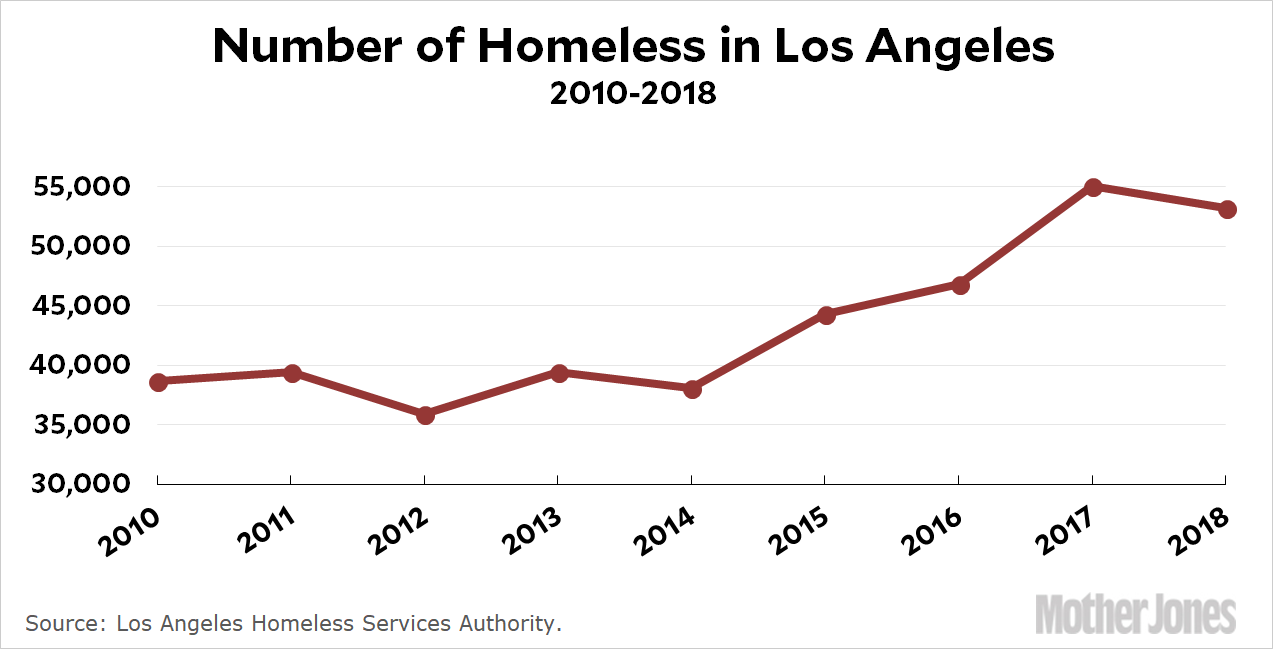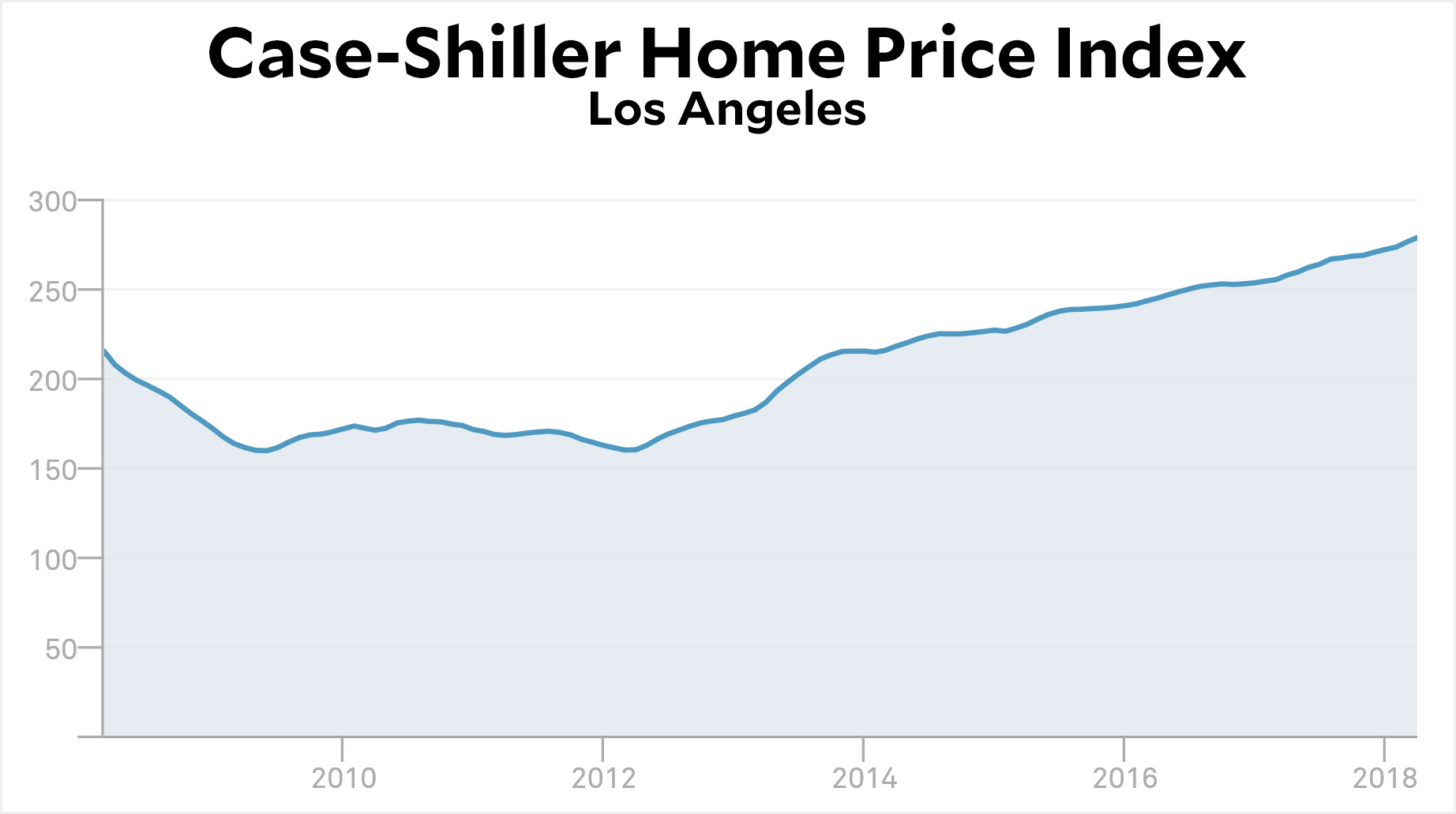This chart appeared on the front page of the LA Times this morning:

This data makes no sense. During the worst recession since World War II, the number of homeless people didn’t increase at all. Then, as the economy got into high gear, the number of homeless suddenly spiked. Why? Shouldn’t it be the other way around?
Is it because housing prices stayed flat during the recession and then started rising? Maybe:

This doesn’t quite fit the homeless data, but it’s close. And the Los Angeles Homeless Services Authority suggests it’s the problem: “Since 2000, median rent in Los Angeles County has increased 32% while median renter household income has decreased 3%.” I guess I can buy this, though it sure seems as if a greater likelihood of having a job would outweigh higher home prices, causing the number of homeless to go down during good economic times. Very strange.

















